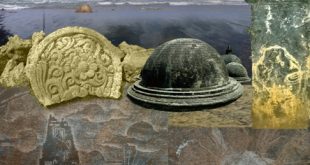ZEYLANICA. A Study of the Peoples and Languages of Sri Lanka by Asiff Hussein. Published by Neptune Publications (Pvt) Ltd. Rs. 2400


Vast corpus of information on fascinating subject
ZEYLANICA. A Study of the Peoples and Languages of Sri Lanka by Asiff Hussein is a comprehensive study of the origins of the peoples and languages of Sri Lanka. The author has employed a multi-disciplinary approach in this work to trace the origins of the races which have made Sri Lanka their home over the centuries and millennia, adducing evidence from historical geography, physical anthropology, archaeology, linguistics and even the exciting new science of genetics. The ethnic groups covered in this survey include both the major communities as well as minor groups who have made Sri Lanka their home over the centuries including the Veddahs, Sinhalese, Tamils, Moors, Malays, Memons, Portuguese and Dutch Burghers, Kaffirs and Ahikuntaka. He has also dealt with the legendary peoples who are supposed to have once inhabited the country including the Raksasas, Yakkhas, Nagas and Nittavo. The author has gathered around him a vast corpus of information from ancient literature, research studies and field work, not only to substantiate established facts, but more importantly, has postulated some new theories which should stimulate further research and inquiry into this fascinating subject. The book is available at all leading bookshops.
Book Review on web:
chasing bawa
history, mystery and the bohemian life – a book blog
Zeylanica by Asiff Hussein
24 February, 2010
Zeylanica by Asiff Hussain is a non-fiction book about the diverse population of Sri Lanka focusing on their linguistic history. I like to read up on Sri Lankan history and culture every time I visit, partly because I don’t speak the language and feel that I’m missing something vital. I’ve also had my interest piqued by our biannual home leave and holidays since childhood driving around the country and being regaled with tales from my father (who you can probably tell loves, loves, loves his country.)
Although I was aware of the Sinhalese, Tamil, Muslim and Burghers (Dutch and Portuguese) who populated the island as well as the Chinese and Malays who remained in the country and married into the population, there were several groups of people I knew nothing about, such as the Kaffirs (descendants of African slaves brought over by the Portuguese, Dutch and British), the Rodiyas (similar to the Untouchables of India), Nittavos (primitive Pygmy-like people) and Nagas (a coastal snake worshipping people). We were going through our books and doing a cull this holiday and what do I find on my father’s bookshelf? M.D. Raghavan’s anthropological study of the Rodiyas , Handsome Beggars: The Rodiyas of Ceylon in 1951. Nice coincidence.
And of course there are the dwindling Veddas (the original indigenous people of the island) and the legendary and mythical Yakkhas and Rakshasas of Ramayana fame. Who can forget the image of King Ravana who kidnapped Princess Sita away from her Prince Rama? This sparked an epic battle to save the Princess from the demon King of Lanka and Rama does just that with the help of his brother Lakshman and his trusted friend, the Monkey God Hanuman who crossed over from India to Lanka in one leap.
Yakkhas also feature in the Mahavamsa which tells of the birth of Sri Lanka with the arrival of Prince Vijaya from India, expelled from his kingdom with 700 followers, who arrives on the island. He is smitten by Kuveni, a Yakkha who has transformed into a beautiful woman. She has fallen in love with the handsome prince and has pledged to hand over her people and make Vijaya lord of her land. The two are married and she bears him twins. But when Vijaya decides to formally become King of Lanka, he sends for an Indian bride and turns Kuveni out. And she in turn is savagely torn apart for betraying her people. You can read a brilliant fictional account in Colin de Silva’s epic The Founts of Sinhala.
I was initially drawn to Zeylanica by its cover with its many photos of the different people that make up the population of Sri Lanka, but the content was both interesting, albeit a little dry as it is predominantly an academic treatise (with copious footnotes, such as you would expect.) But there are several interesting chapters, especially those pertaining to the mythological beginnings of the island, the historical route through which the people and language have traveled from Vedic India, the evolution of Sinhalese from Sanskrit and Pali and the linguistic connections with other Indo-European languages such as Latin, Greek and English.
Although it’s not a quick read, it was very interesting and informative and I certainly learnt a lot about the groups of people that make up and give Sri Lanka such diversity.
 Asiff Hussein – Asiff Hussein Web Site
Asiff Hussein – Asiff Hussein Web Site




